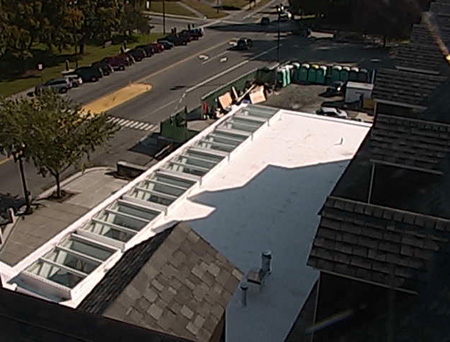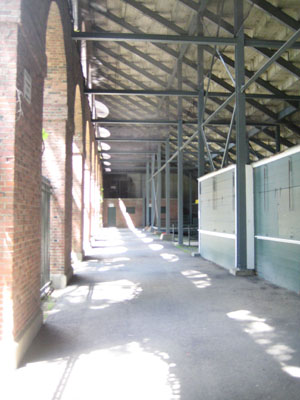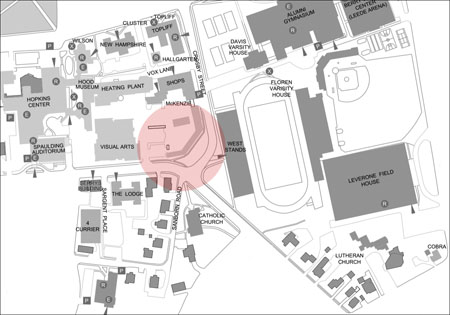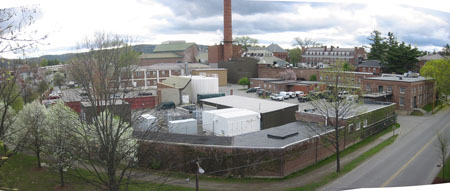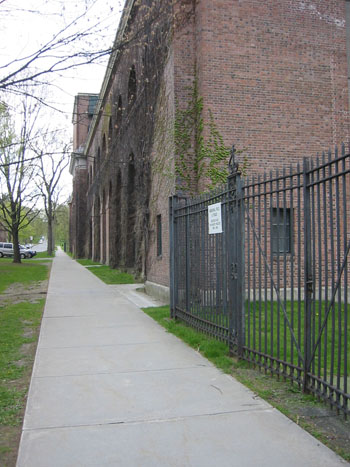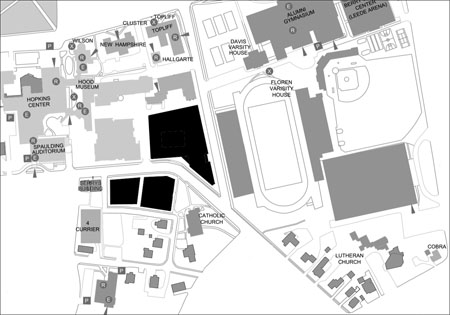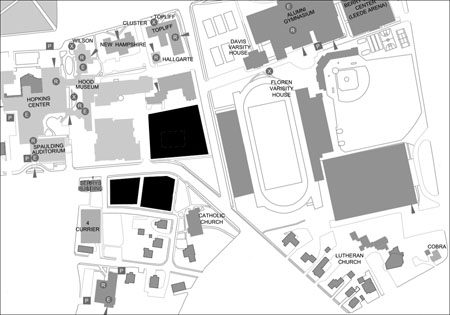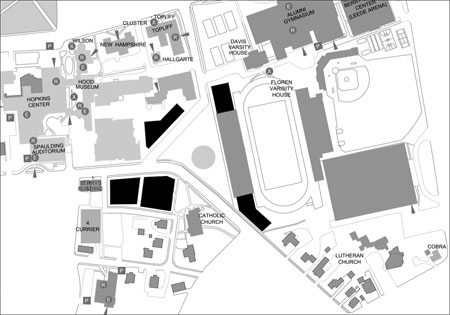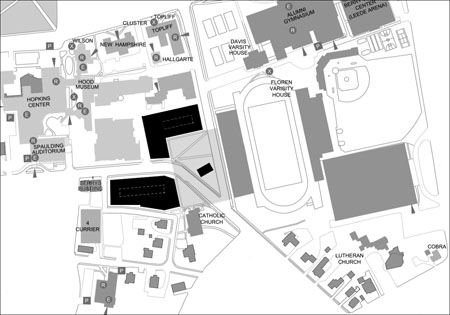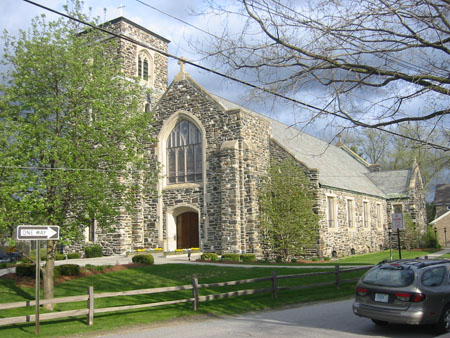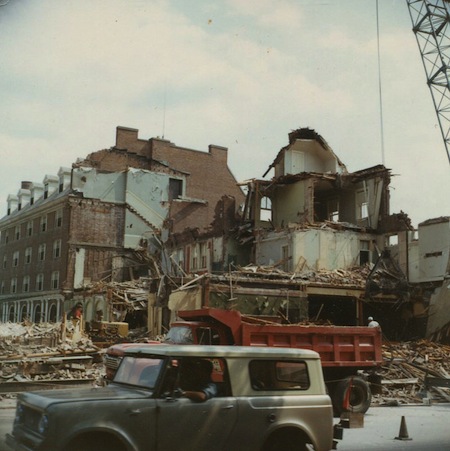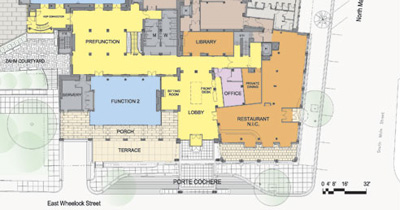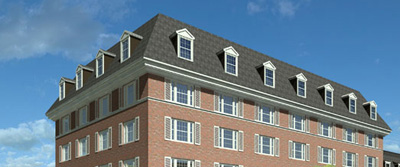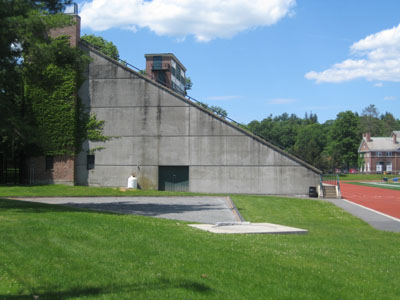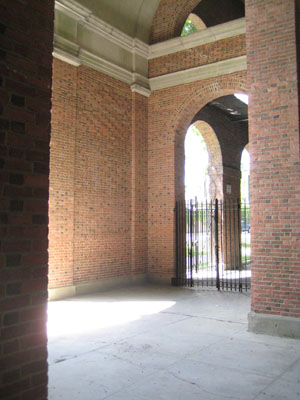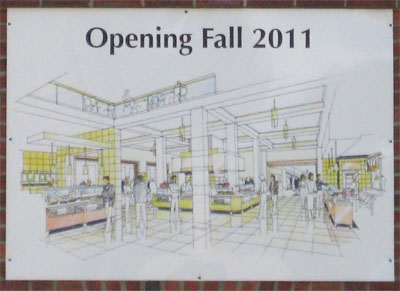I. Background
The site where Leverone Field House and Thompson Arena face each other across South Park Street, with a couple of houses in between, is an interesting one (Google Maps aerial, aerial, street view entering from the south). It is getting some attention these days.
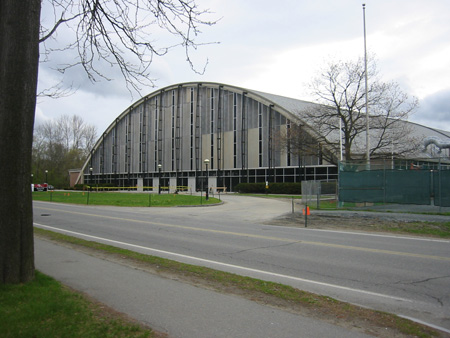
Leverone Field House forecourt in June 2005
First, the transit report proposes a bus shelter here (pdf).
Second, Athletic Director Harry Sheehy commented in an interview in the Alumni Magazine that the school needs another field house. Chase Fields seems a likely site, and the building could even take over a part of the Thompson parking lot facing South Park Street.
Third, the owner of the private house just below the entrance to the parking lot, at 31 1/2 South Park Street, has demolished the building and is replacing it with a three-story building containing a dental office with apartments above (Planning Board minutes Sept. 13 (pdf); see also Planning Board minutes Sept. 6 (pdf)).
All of this activity gets one thinking about the two old houses in front of Thompson Arena at 25 and 27 South Park Street, both designed by Jens F. Larson.
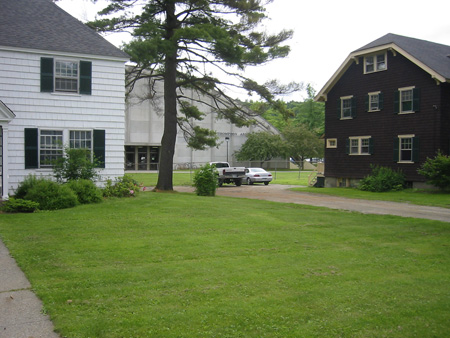
Thompson Arena forecourt in June 2005 showing 25 and 27 South Park
On the one hand, the presence of the two houses preserves the historic appearance of the east side of the street and maintains the rhythm of solids and voids that stretches all the way up to Wheelock Street. Number 29, the Fire & Skoal house, is also a Larson product.
The view that the houses frame is interesting and surprising — it looks like there is some kind of hangar back there, and a walk along the beach-flat ground that reveals the ribs and upturned hulk of Thompson behind the brown shingled house can create a nautical impression. Removing the houses to create a plaza would be a bit arbitrary: very few people actually walk from the front door of Leverone to the front door of Thompson.
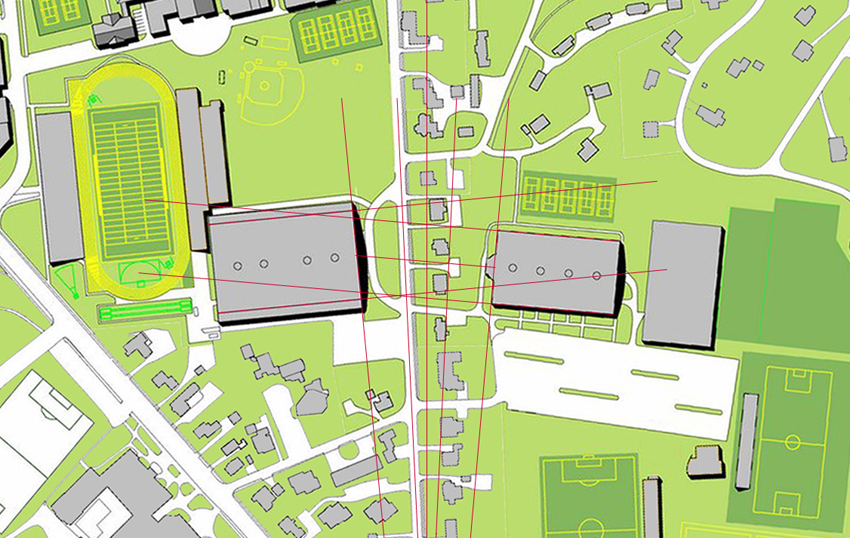
Site plan
On the other hand, the two Nervi buildings were meant to face each other, and the two houses have always been meant to come out. Master plans have long proposed that the houses be removed and a plaza be constructed to link the two concrete arenas. The 2007 Landscape Master Plan included such a proposal (pdf). The 2000 student life master plan (pdf) notes that the entry into Thompson Arena is obscured by existing houses along Park Street:
There are, however, opportunities to reinforce the entry to Thompson Arena by moving or demolishing the College-owned houses on Park Street in front of the current entry. Doing so would relate the Arena to its cousin, Leverone Field House, both designed by Pier Luigi Nervi, and complete an intention planned but never realized.
II. Proposal
The two Larson houses at 25 and 27 could be moved across the street, above Cobra, and a plaza could be built in their place.
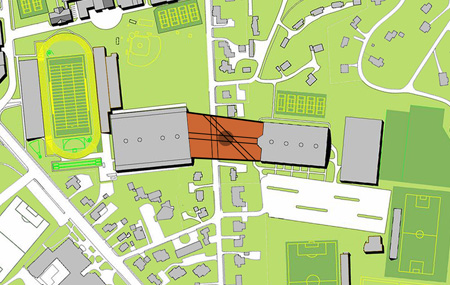
Proposal
The plaza would be difficult to make uniform in footprint. The two Nervi buildings do not face each other directly. Each stands a different distance from the street and rises to a different height.
Piazza Nervi would become the student entrance to the whole Chase Fields complex. Pedestrians walking down Park Street would swing diagonally across the Thompson forecourt and then head eastward. The present route into the parking lot is relatively convoluted and disappointing.
As a bonus, the piazza could tie into a new path cut westward through the Crosby-Park block. The need for this path to Lebanon Street, the only cross-block route between Wheelock and Summer Streets, has been obvious for years, and the Ped/Bike Master Plan released in October (pdf) recommends it. A long brick wall built to shield the neighbors’ houses could serve as a venue for a horizontal climbing race put on by the DOC: speed-bouldering.
III. Conclusion
The new piazza would be the first work of architecture of any kind in Hanover — whether a plaque, monument, room, or building — dedicated to an architect.
It would make a nice gateway for drivers entering the campus from the southeast. That might be its most important function.
The danger is that Piazza Nervi would be a windswept Modernist wasteland: there is a fine line between minimalism and barrenness. But something good is possible.
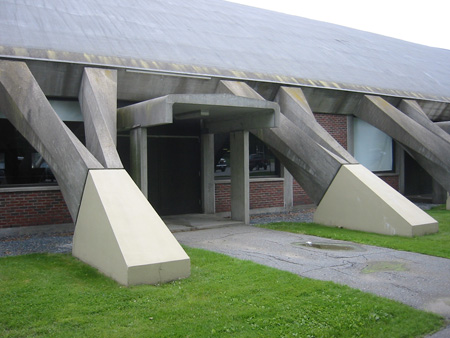
Thompson Arena side entrance in June 2005
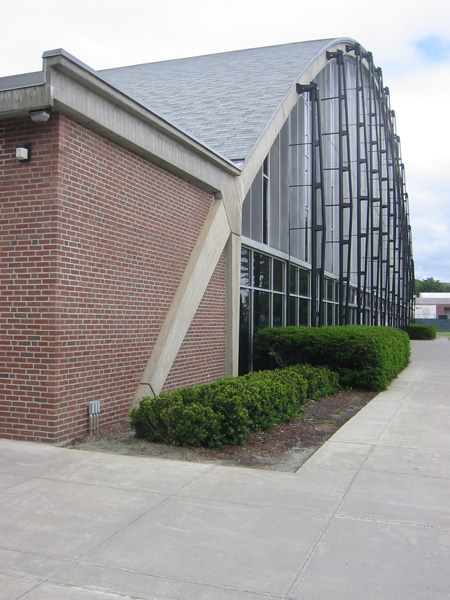
Leverone Field House front facade in June 2005
—–
[Update 11.17.2012: Broken link to oblique image fixed.]
[Update 06.10.2012: Link to and quote from 2000 master plan added. Thanks to Big Green Alert: The Blog for the link here and ideas.]
